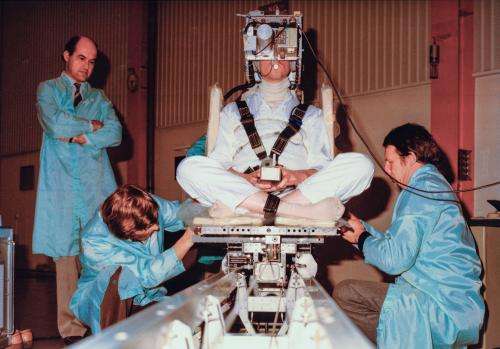Credit: ESA
A test subject sitting on Sled, an ESA experiment launched on Spacelab-1 on 28 November 1983. Sled investigated space sickness by monitoring eye movement as the seat moved horizontally and tilted while cold or hot air was blown into the astronaut's ears.
The vestibular system in the inner ear helps to keep balance and navigate the space around us. In weightlessness an astronaut's vestibular system works differently and the sense of equilibrium changes, causing space sickness. The Sled experiment allowed researchers to understand how the vestibular system adapts to living in space.
Spacelab was a European-built reusable space laboratory that flew on the Space Shuttle from 1983 to 1998. Elements of Spacelab design feature in later ESA space hardware such as the Columbus laboratory and the Automated Transfer Vehicles.
Spacelab surveyed the possibilities of weightless research in many scientific areas, paving the way for research on the International Space Station. Spacelab experiments led to space-age metals used in mass-produced smartphones and revealed areas of space research that show promise in treating chronic muscle diseases.
Provided by European Space Agency























